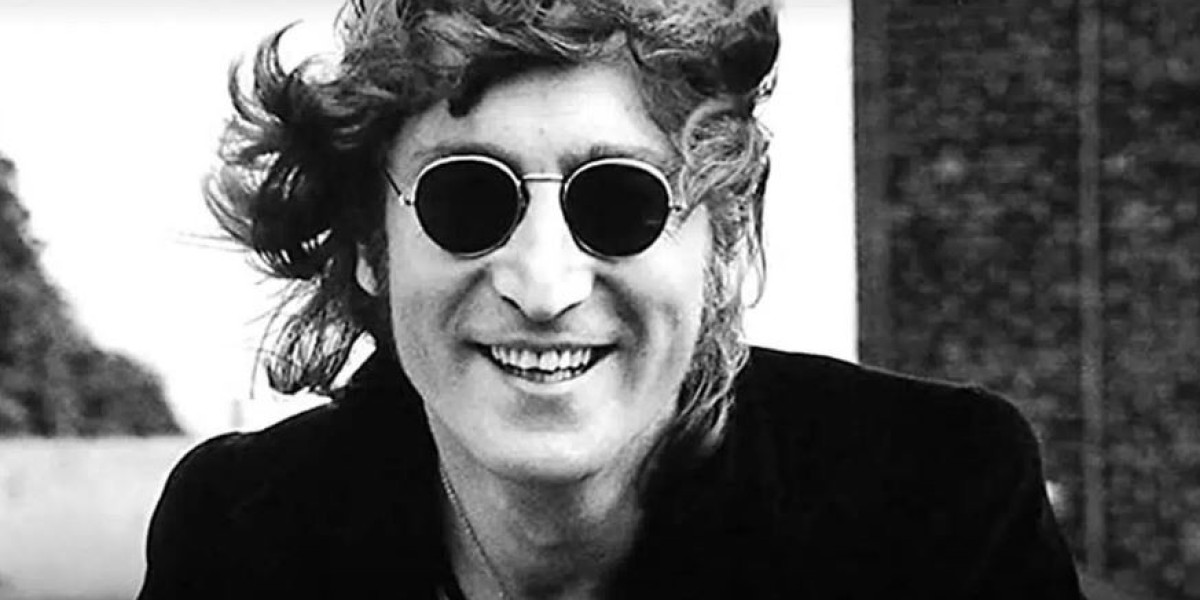John Lennon, a name synonymous with peace, love, and revolutionary music, remains an enduring icon whose influence transcends generations. Born on October 9, 1940, in Liverpool, England, Lennon’s journey from a troubled childhood to becoming a founding member of the Beatles is a testament to his indomitable spirit and immense talent.
Early Life
Lennon’s early years were marked by familial instability. His parents separated when he was young, leaving him in the care of his Aunt Mimi. Despite these challenges, Lennon found solace in music, teaching himself to play the banjo and forming his first band, the Quarrymen, as a teenager.
The Beatles and Beyond
The Quarrymen would evolve into the Beatles, the band that would change the face of music forever. Lennon, along with Paul McCartney, George Harrison, and Ringo Starr, created a legacy of songs that continue to resonate with fans around the world. As the Beatles’ fame grew, so did Lennon’s influence as a songwriter and musician.
Lennon’s partnership with McCartney is still celebrated as one of the most successful in music history. His ability to blend thought-provoking lyrics with innovative melodies resulted in timeless hits like “Imagine” and "Strawberry Fields Forever".
Activism and Artistry
Lennon was not just a musician; he was an activist, artist, and author. His marriage to Yoko Ono in 1969 marked a new chapter in his life, one dedicated to promoting peace and love. The couple’s famous “Bed-ins for Peace” became a symbol of their commitment to non-violent protest.
Legacy and Loss
Tragically, Lennon’s life was cut short when he was murdered on December 8, 1980, in New York City. His death sent shockwaves around the world, but his message of peace and his musical legacy live on.
John Lennon was more than just a member of the Beatles; he was a visionary who used his platform to make the world a better place. His music, his words, and his actions continue to inspire and challenge us to imagine a world filled with peace and love.
John Lennon Albums
John Lennon’s discography is a reflection of his evolution as an artist and peace activist. Here’s a brief overview of his studio albums:
Unfinished Music No. 1: Two Virgins (with Yoko Ono) - Released on November 29, 1968.
Unfinished Music No. 2: Life with the Lions (with Yoko Ono) - Released on May 9, 1969.
Wedding Album (with Yoko Ono) - Released on November 7, 1969.
John Lennon/Plastic Ono Band - Released on December 11, 1970.
Imagine - Released in September 1971, it became his most critical and commercial success.
Some Time in New York City (with Yoko Ono) - Released in June 1972.
Mind Games - Released in November 1973.
Walls and Bridges - Released in 1974.
Rock ‘n’ Roll - A covers album released in 1975.
Double Fantasy - Released in 1980, just three weeks before his untimely death.
Milk and Honey - A posthumous release in 1984.
Additionally, to celebrate what would have been Lennon’s 80th birthday, the box set Gimme Some Truth. The Ultimate Mixes was released in 2020, containing newly remixed versions of 36 of his songs. Super deluxe box-sets of Imagine and John Lennon/Plastic Ono Band were also released in 2018 and 2021, respectively.
John Lennon Songs
John Lennon’s solo career produced a rich collection of songs that reflect his personal and artistic evolution. Here are some of his most notable tracks:
“Imagine”: Perhaps Lennon’s most famous song, advocating for peace and a world without borders or possessions.
“Instant Karma!”: A song that captures the spirit of activism and the idea that one’s actions have immediate effects.
“Happy Xmas (War Is Over)”: A Christmas song that has become a seasonal anthem for peace.
“Give Peace a Chance”: Recorded during the Bed-ins for Peace with Yoko Ono, this song became an anthem for the anti-war movement.
“Jealous Guy”: A poignant track expressing vulnerability and remorse.
“Mother”: A powerful song reflecting on his childhood and the absence of his parents.
“Woman”: A love song dedicated to his wife, Yoko Ono.
“Watching the Wheels”: A song about stepping back from the pressures of fame and enjoying a simpler life.
“Stand by Me”: A cover of Ben E. King’s classic hit, featured on his “Rock ‘n’ Roll” album.
“Mind Games”: The title track of his 1973 album, promoting the idea of using one’s mind for positive change.
Did John Lennon Win Any Awards For His Music?
Yes, John Lennon received numerous awards for his music throughout his career. Here are some highlights:
Academy Award: Lennon won an Oscar for Best Music, Original Song Score for “Let It Be” with The Beatles in 1971.
Grammy Awards: He won a Grammy for Album of the Year for “Double Fantasy” in 1982, posthumously. Lennon also received a Grammy Lifetime Achievement Award in 1991.
BAFTA Awards: Lennon was nominated for a BAFTA Film Award for Most Promising Newcomer to Leading Film Roles for “A Hard Day’s Night” in 1965.
Walk of Fame: He was awarded a Star on the Walk of Fame posthumously on September 30, 1988.
These are just a few examples of the recognition Lennon received for his contributions to music. His legacy continues to be celebrated with various honors and tributes around the world.
John Lennon Net Worth
At the time of his death in 1980, John Lennon’s net worth was estimated to be around $200 million. Adjusted for inflation, this would be equivalent to approximately $620 million in today’s dollars. Since then, his estate has continued to generate significant revenue from royalties, merchandise, licensing fees, and more. Today, his primary heir, Yoko Ono, has a net worth of $700 million1. Lennon’s financial legacy is a reflection of his successful career as a musician, songwriter, and cultural icon.
John Lennon Cars
John Lennon had an impressive collection of cars throughout his life, reflecting his success and eclectic taste. Here are some of the notable cars he owned:
Rolls Royce Phantom V: Famous for its custom psychedelic paint job, this car is a symbol of Lennon’s eccentricity and the 1960s counterculture.
Ferrari 365 GTB/4 Daytona: A classic sports car known for its speed and style.
Mercedes-Benz 600 Pullman Limousine: A luxurious and spacious vehicle fit for a star of Lennon’s caliber.
Lamborghini 400GT: A rare and exotic Italian sports car.
Lamborghini Islero: Another fine example of Lennon’s taste for Italian craftsmanship.
Lamborghini Espada: A four-seater grand tourer with a distinctive design.
Austin Princess Limousine: A 1965 model that was later passed on to his son, Julian.
Mini Cooper: A British icon, which Lennon owned in a customized version.
Aston Martin DB6: A car synonymous with British luxury and performance.
Lennon was known to be a passionate car enthusiast who enjoyed customizing his cars and driving them to their fullest potential. His collection is a fascinating aspect of his legacy, showcasing a different side of the music legend.
John Lennon Houses
John Lennon lived in several notable residences throughout his life. Here are some of the key properties associated with him:
Tittenhurst Park: Located in Berkshire, England, this was the home of John Lennon and Yoko Ono from late summer 1969 until August 1971. Lennon purchased the property for £150,000 and spent twice that amount on renovations. It’s a Grade II listed early Georgian country house set in 72 acres.
Kenwood: Situated on the St George’s Hill estate in Weybridge, Surrey, England, Lennon bought this house for £20,000 in 1964 and lived there until the late spring of 1968. The house, known for its mock-Tudor style, underwent extensive renovations during Lennon’s ownership
The Dakota: Perhaps his most famous residence, The Dakota is an iconic apartment building in New York City where Lennon lived with Yoko Ono. It’s also the site where he was tragically murdered in 1980.
Childhood Homes: Lennon’s childhood homes in Liverpool, including Mendips, where he lived with his Aunt Mimi, are significant as they were influential in his early life and are now preserved by the National Trust.
These homes reflect the various stages of Lennon’s life, from his humble beginnings in Liverpool to the height of his fame and his final years in New York City. Each property holds a significant place in the story of his life and legacy
Conclusion
John Lennon’s life story is a powerful reminder of how one person’s creativity and passion can leave an indelible mark on the world. As we reflect on his contributions to music and society, we are reminded that every one of us has the power to effect change, just as Lennon did with his art and activism. Let’s carry forward his legacy of peace and continue to imagine a world as one.










